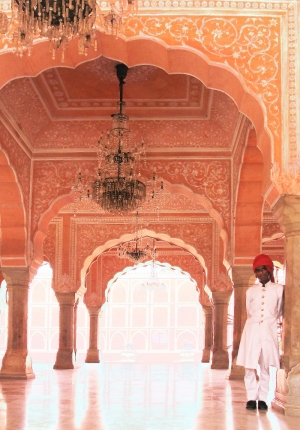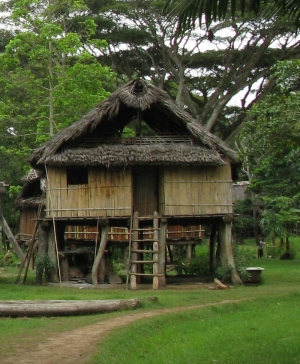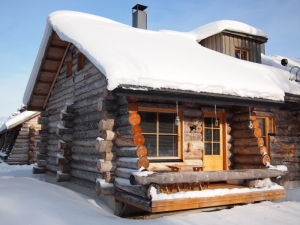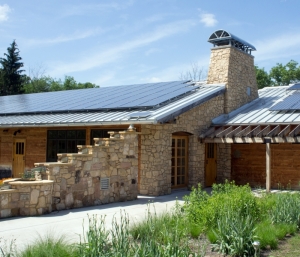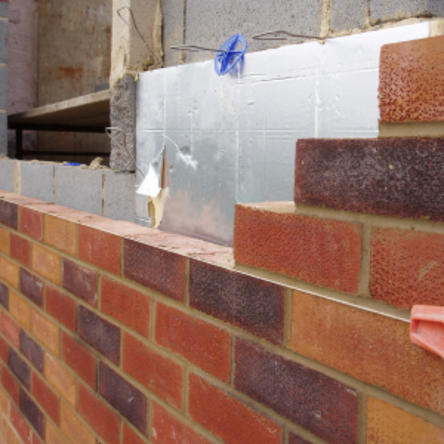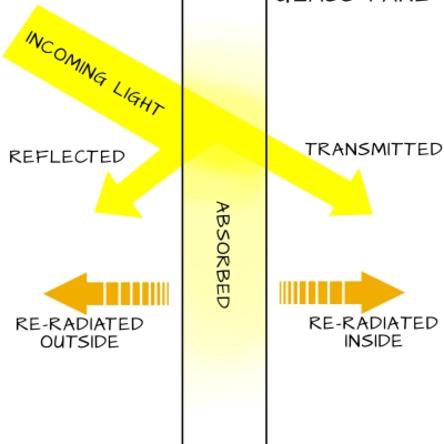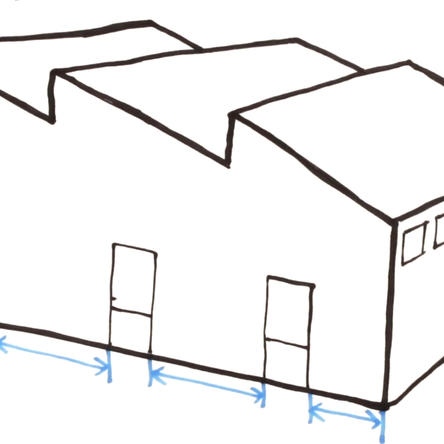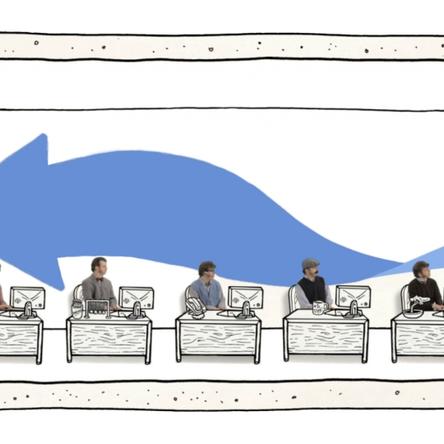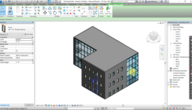You are here
Humans first created shelters to provide thermal comfort and protection from natural elements, and this still remains a primary objective of buildings. The building envelope is the physical separator between the interior and exterior of a building.
Components of the envelope are typically: walls, floors, roofs, fenestrations and doors. Fenestrations are any opening in the structure: windows, skylights, clerestories, etc. When designing the building envelope, knowing some fundamentals of building materials and heat transfer will help you make the right trade-off decisions.
Envelopes for Climate Types
A well-designed envelope responds to the local climate. As described in the Climate page, there are many classifications of climate around the globe, but the summary below shows four common extremes that people design for. Milder climates can use milder versions of these strategies, or mix and match.
Arid Climate Envelope
|
The City Palace in Jaipur, India. Photo: Jeremy Faludi |
Arid climates are very dry, and usually hot, but they often have large swings of temperature from day to night. Thus thermal mass on the outside of the building is the most crucial design strategy to even out such temperature swings. For consistently hot locations, it also helps to have high ceilings, shaded breezeways, light colors, and daylighting via reflected light (not direct sun), such as in this audience hall in the Jaipur city palace. Courtyards with natural ventilation and pools or fountains can provide evaporative cooling as well. |
Tropical Climate Envelope
|
A traditional home in Papua New Guinea. Photo: Jeremy Faludi |
Tropical climates are hot and humid. Therefore, keeping the heat of the sun off is the top priority, as well as maximizing ventilation—essentially a reflective insulated roof with walls that pass breeze but not rain is ideal. This traditional Papua New Guinean home’s thick light-colored thatch roof keeps out the sun’s heat, while open eaves and porous bamboo slats for walls and floor maximize natural ventilation. The materials are all low-mass to avoid condensation and mold growth, which can happen with high-mass materials in humid climates. (Note: Jalousie windows are found in the tropics, but are not as common elsewhere, because they are so porous to breezes.) |
Cold Climate Envelope
|
A vernacular-design cabin in Finland. |
Cold climates have many more heating degree days than cooling degree days. Thus maximizing insulation is the key to keeping warm, as well as using windows for solar gain on thermal mass inside the building envelope (not outside as in arid climates). Part of having effective insulation in cold climates is an air-tight envelope, avoiding infiltration. This Finnish cabin has very few and very small windows except on the south side, to maximize solar gain while minimizing losses elsewhere. Before modern insulation, thick solid log walls such as these provided better insulation than board walls could. |
Mixed Cold / Hot Climate Envelope
|
The Aldo Leopold Center in Baraboo, Wisconsin. Photo: Jeremy Faludi |
Many “temperate” inland climates actually have two extremes--cold in winter, hot and humid in summer. Flexibility is the key to designing for these climates. The Aldo Leopold Center in Wisconsin, the first building to be LEED certified as carbon-neutral, uses deep overhangs to allow low winter sun in through the windows to heat up a high-mass concrete slab inside, while blocking high summer sun. It also uses a light roof and darker walls to repel summer sun but absorb winter sun. Extra insulation retains heat in winter, but operable windows passively cool it in summer. |
Envelope Energy Flows
From an energy flow perspective, the envelope is a composition of layers with varying thermal and permeability properties. The envelope may be composed of membranes, sheets, blocks and preassembled components. The choice of envelope is governed by the climate, culture, and available materials. The range of choices in envelope design can be illustrated by two opposite design concepts: the open frame and the closed shell.
In harsh climates, the designer frequently conceives the building envelope as a closed shell and proceeds to selectively punch holes in it to make limited and special contact with the outdoors. This may also be true where there are unwanted external influences such as noise or visual clutter.
When external conditions are very close to the desired internal ones, the envelope often begins as an open structural frame, with pieces of the building skin selectively added to modify only a few outdoor forces.
The flow of heat through a building envelope varies both by season (heat always flows from hot to cold and generally flows from a building in winter and to a building in summer) and by the path of the heat (through the materials of a building’s skin, or by outdoor air entering). These complexities must be considered by a designer who intends to deliver comfort and energy efficiency.
The following links provide more detailed information on building envelope components and the minimum thermal requirements of envelopes for different climates as defined by ASHRAE.
Dive Deeper
Walls
Understanding and optimizing the heat transfer through the walls is important in high performance building design. Using thermal mass and insulation to your advantage with passive design strategies can help reduce the amount of energy that active systems need to use.Windows
Heat flow through windows and skylights requires special attention for several reasons. Despite dramatic improvements, these transparent/translucent envelope components still usually have the lowest R (highest U) of all components of an envelope.Aperture Placement & Area
Aperture placement and area are important because strategic use of windows and skylights can help you achieve thermal and visual comfort passively, saving both energy and money.Shading & Redirecting Sunlight
Shading is an important set of strategies for visual comfort and thermal comfort. As such, successful shading is measured by the overall success of visual and thermal comfort.Infiltration & Moisture Control
Water also moves through building envelope assemblies—in both liquid and vapor states. The focus here is upon water vapor movement. Water vapor will often need to be handled by a climate control system through the use of energy (termed latent heat).Links and References
- Information from tables in ANSI/ASHRAE/IESNA Standard 90.1-2007
- This document of climate data was made for designers to inform energy-conscious design decisions. Climate Zones are summarized, and suggestions are given for passive design strategies appropriate to each climate.
- This interactive page allows you to view building examples tied to passive design strategies for locations within the US.

